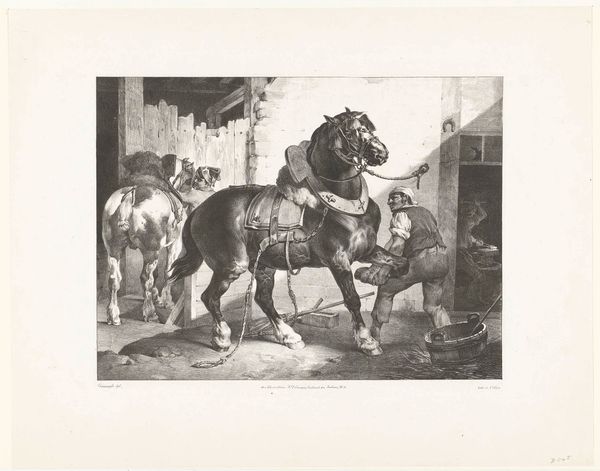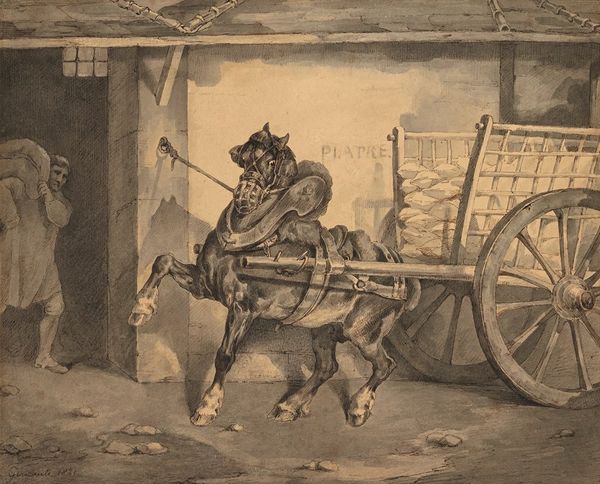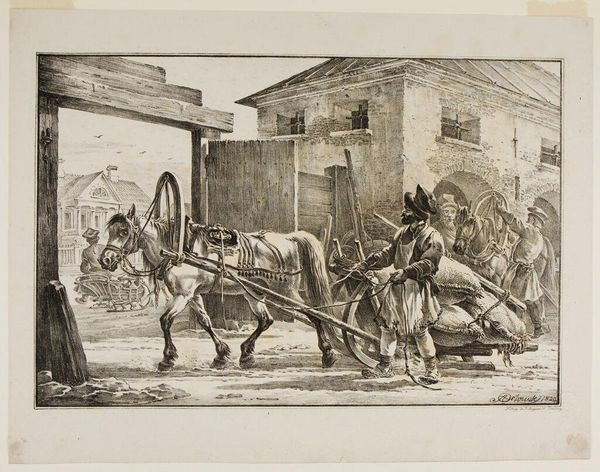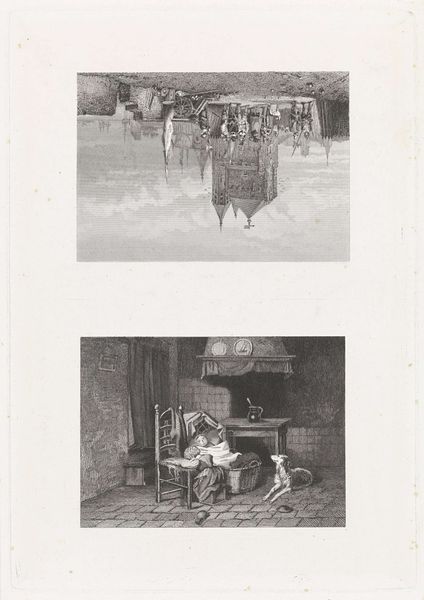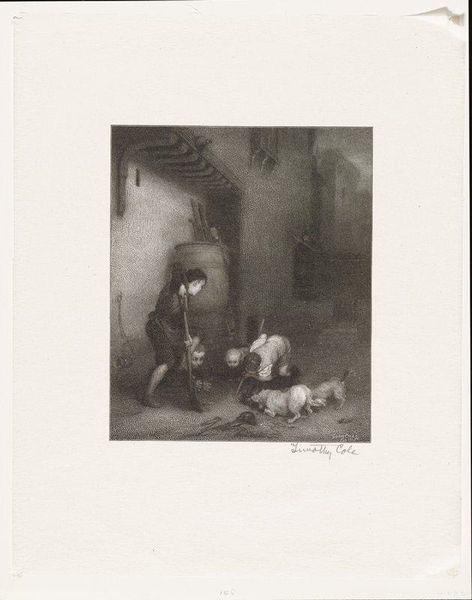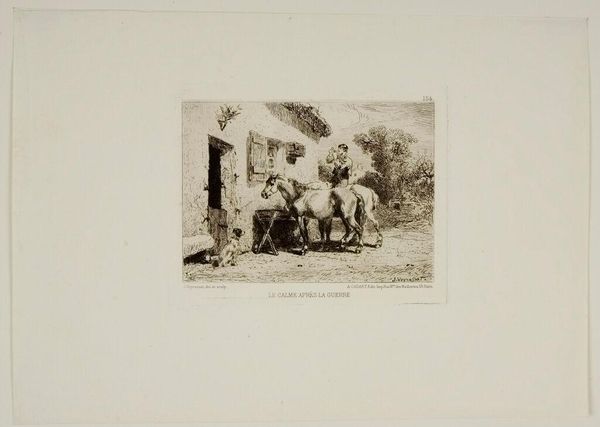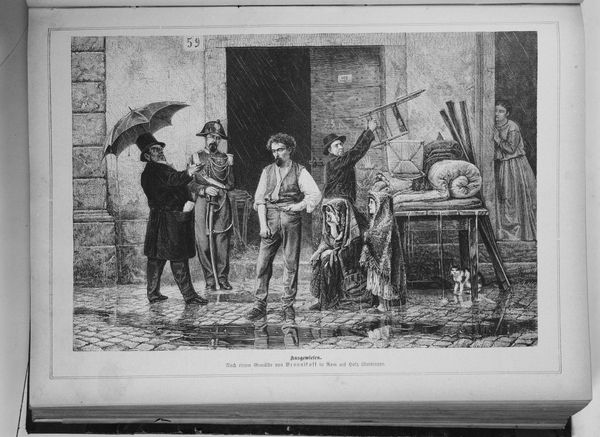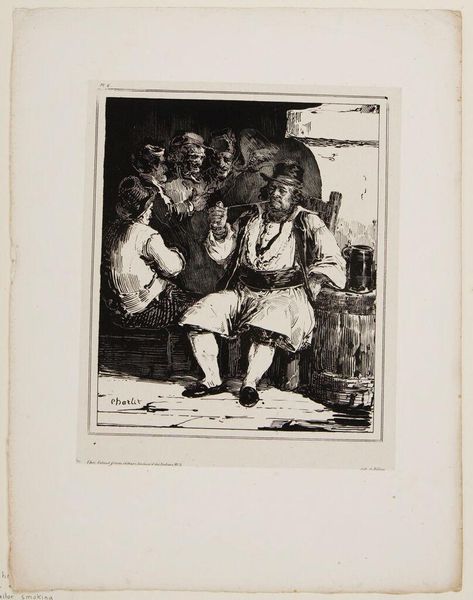
Copyright: CC0 1.0
Curator: Théodore Géricault’s "The Horse of the Plasterer" depicts a working horse, laden with equipment, pausing outside what appears to be a simple workshop. Editor: It's like a still from a gritty, forgotten film. There’s such weariness in the horse’s posture, yet a defiant strength. You can almost smell the dust. Curator: Géricault, despite his aristocratic background, often turned his attention to the lives of the working class, portraying them with a dignity rarely seen in art of the time. Editor: It’s interesting how he captures the mundane aspects of labor, elevating the everyday to something monumental through light and shadow. And that muzzle—it’s almost a character itself! Curator: Absolutely, and it reflects the changing social landscape of post-Revolutionary France, where the value and visibility of labor were being renegotiated. Editor: It's a stark reminder of how much the world relies on the unseen, the unsung heroes, animal or human, who keep the foundations together. Curator: A very poignant perspective; it adds another layer to appreciating Géricault’s empathy. Editor: I'm leaving with a renewed respect for every beast of burden, seen and unseen.
Comments
No comments
Be the first to comment and join the conversation on the ultimate creative platform.

